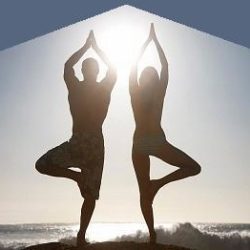Pranayama is generally defined as breath control. Although this interpretation may seem correct in view of the practices involved, but it does not convey the full meaning of the term.
Understanding Pranayama
The word Pranayama is comprises of two roots: ‘prana’ plus ‘ayama’. Prana means ‘vital energy’ or ‘life force’. It is the force which exists in all living things. Thus Pranayama should not be considered as mere breathing exercises aimed at introducing extra oxygen into the lungs. It utilizes breathing to influence the flow of ‘vital life energy’ (prana), into the energy channels of the body.
The word ‘yama’ means ‘extension or expansion of the dimensions of prana’. The techniques of Pranayama provide the method whereby the life force can be activated and regulated in order to go beyond one’s normal boundaries and awareness.
Four aspects of Pranayama
In Pranayama practices four important breathing aspects are utilized. These are:
- Pooraka or inhalation
- Rechaka or exhalation
- Antar kumbhaka or internal breath retention
- Bahir kumbhaka or external breath retention
All practices of Pranayama involve these four aspects of the breathing. Breath retention or kumbhaka is the most important part of Pranayama, but this is performed with gradual development of control over respiration.
Categories of Pranayama
Pranayama can be categorized in the following four categories:
- Heating Pranayama (Bhastrika, Kapalbhati and Suryabheda)
This category of pranayama, generates heat in the body and may even cause sweat, and increased heart rate. These should be ideally performed in cold weather. - Cooling Pranayama (Sheetali and Sheetkari)
These pranayama cools down the body, and should be performed in hot weather. - Balancing Pranayama (Nadi Shodhan)
This category of pranayama balances the central nervous system and help us become focused and centralized. - Tranquilizing Pranayama (Bhramari)
Tranquilizing pranayama, as the name suggest crates tranquilizing effect on the brain and thus they relax body and mind.
When ever performing all the Pranayama, they should be performed in the above mention order only.
